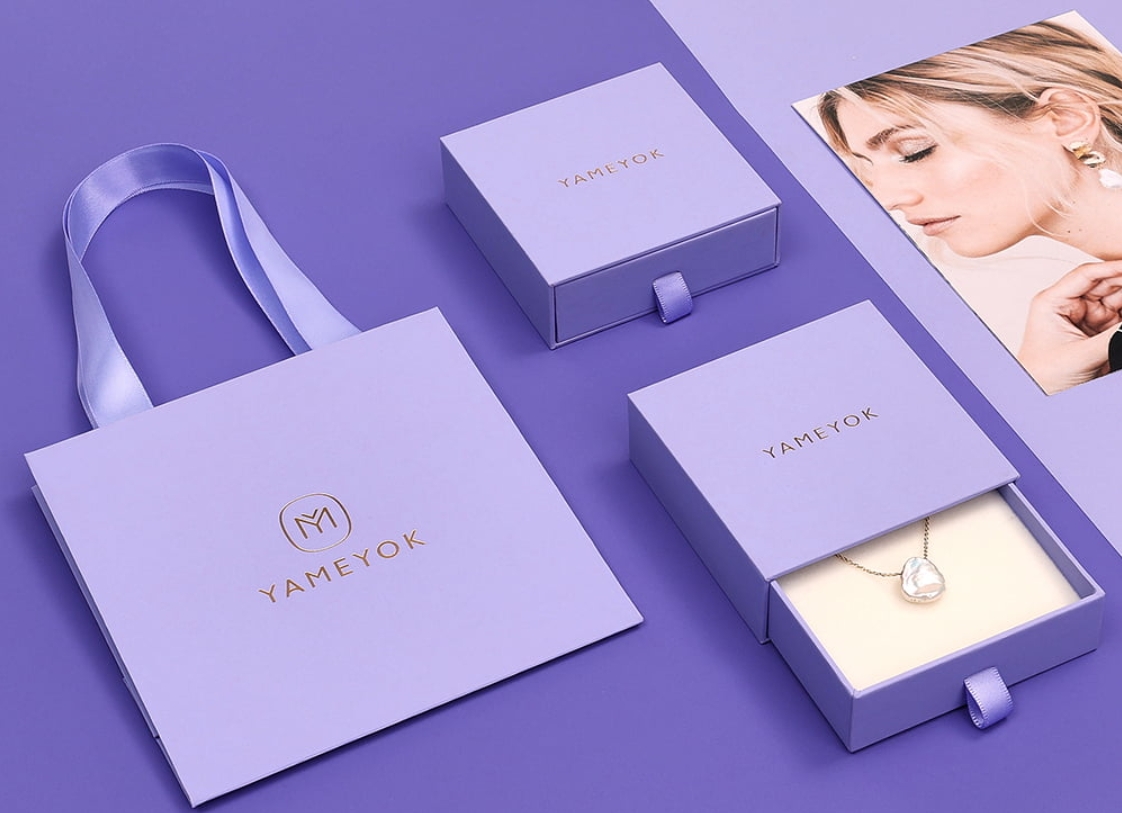You can share
- Share to Facebook
- Share to Google+
- Subscribe to our
- Share to Linkedin
- Share to Twitter

When packaging factories make jewelry packaging boxes, they can use a variety of printing processes to enhance the beauty and texture of the packaging boxes to meet the needs of different customers. There are 10 common printing processes:
UV printing is a printing method that uses ultraviolet light to cure ink. It is suitable for a variety of materials, especially non-absorbent materials such as plastics, metals, and glass. UV printing is characterized by bright colors, fast drying speed, thick ink layer, and scratch resistance. During the UV printing process, the ink cures quickly under ultraviolet light, which improves production efficiency and reduces environmental pollution. UV printing is often used for high-end packaging, labels, and commercial prints.
Screen printing is a stencil printing technology that uses a silk screen as a base. It transfers the ink through the mesh to the substrate through the scraper pressure and is suitable for a variety of substrates, such as paper, plastics, glass, and metal. Screen printing is characterized by a thick ink layer and strong coverage, which is suitable for making three-dimensional patterns. It can be used for single-color or multi-color printing and is widely used in clothing printing, poster printing, electronic product decoration, etc.

Embossed printing is a process that forms a three-dimensional pattern on the material through the pressure of the embossing machine. This process can form a raised or sunken texture on the surface of the material and is often used to simulate the texture of natural materials such as leather and wood. Embossing printing requires precise temperature control and pressure control to ensure the uniformity and clarity of the pattern. It is widely used in packaging boxes, wallpapers, furniture decoration, and other fields.
Hot stamping is a process that transfers metal foil or color foil to the surface of the substrate through heat pressing. Hot stamping materials usually include electrochemical aluminum foil, which is composed of multiple layers, including a base film layer, an isolation layer, a dyeing layer, an aluminum-plated layer, and an adhesive layer. During the hot stamping process, the electrochemical aluminum foil transfers the metal layer to paper or other materials under the action of heat and pressure to form a glossy pattern. Hot stamping technology is often used to enhance the beauty and grade of products such as packaging boxes, trademarks, and certificates.
Offset printing, also known as lithography, is a widely used printing technology. It is based on the principle that oil and water do not mix, and printing is achieved by carrying ink on the image part of the printing plate, while the non-image part is covered by water or a moistening liquid. Offset printing is suitable for mass production, can accurately overprint, and is suitable for color and monochrome printing. Offset printing is commonly used in books, magazines, newspapers, and packaging printing.
Embossing and debossing are two processes that use pressure to create a three-dimensional effect on printed matter. Embossing is to apply pressure from the back of the paper to make the surface bulge; while debossing is to apply pressure from the front to make the surface concave. These two processes can enhance the visual effect and feel of the printed matter and are often used in high-end packaging boxes, trademarks, certificates, etc.
Four-color printing is a method of color printing using four inks: yellow (Y), magenta (M), cyan (C), and black (K). Rich colors can be reproduced through different combinations of these four basic colors and changes in dot size. Four-color printing is suitable for mass production and is a standard printing method in the printing industry. It is widely used in color-printed products such as books, magazines, and packaging boxes.
Spot color printing refers to the use of specific inks (spot color inks) to print large areas of single color or specific patterns. Compared with four-color printing, spot color printing can achieve brighter and more saturated color effects, and the ink layer is thicker. Spot color printing is often used for brand logos, packaging boxes, and promotional materials to ensure color consistency and visual impact.
Gloss lamination and matte lamination are surface treatment processes for printed products. By covering the surface of the printed product with a layer of transparent plastic film (glossy film or matte film), the wear resistance, scratch resistance, waterproofness, and aesthetics of the printed product are improved. Gloss lamination makes the surface of the printed product shiny, while matte lamination makes the surface matte. This process is suitable for printed products that need to be protected and upgraded, such as packaging boxes, album covers, etc.
UV treatment refers to coating a layer of UV varnish on the surface of printed materials and curing it through ultraviolet rays to form a protective film. This process can enhance the scratch resistance, wear resistance, and waterproofness of printed materials while making the surface brighter. UV treatment is often used in high-end packaging boxes, brochures, and other printed materials to enhance the grade and visual effect of the products.
Through the introduction of the above 10 processes, I believe you can better understand the manufacturing process of jewelry packaging boxes.